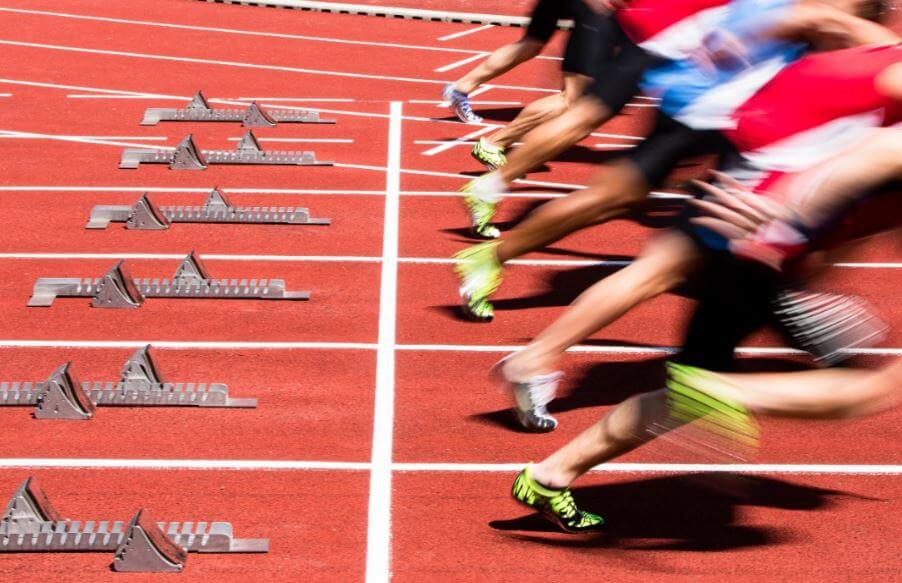The Different Disciplines of Athletics and Their Benefits

If you practice athletics you must know that in order to win, you must give your best effort. That’s why sports can be a great motivator to encourage people to maintain their optimal physical condition. If you are in optimal conditions, you will perform better and this will give you better odds of defeating your opponent.
Athletics
Athletics include a wide range of disciplines that can be individual or collective. The different modalities range from high jumps to sprints or hurdles. There are many other variants which implement specific instruments such as javelins and hammers.
Athletics are typically quite simple since they do not require major structural or technological provisions. The different types have simple rules that are maintained at competitive levels including the Olympics. Due to these characteristics, athletics have captured the attention of a large number of people who would like to participate either professionally or as an amateur.

Different disciplines of athletics
Athletics are broken down into four main categories. Each established category makes reference to the movement required to execute the activity. The following categories have a wide range of followers and are also represented professionally in competitions such as the Olympics.
Races
This category includes several subcategories or modalities. Here are a few examples:
- Sprints. This is one of the most famous subcategories. The idea is to run to the finish line as fast as possible. Sprints are not carried out over distances greater than 400 meters.
- Medium distance races. These races are carried out over distances of between 800-3000 meters.
- Long distance races. These races are carried out over distances greater than 3000 meters.
- Hurdles. These races can be up to 3000 meters and the track has various obstacles.
- Relay races. In this subcategory, a group of athletes performs sprints, while passing the baton to their teammates.

Jumps
There are four subcategories of jumps and they include the following:
- Long jump. This category includes high-powered jumps with the aim of jumping the furthest. Athletes have three opportunities to jump.
- High jump. Flexibility, agility, strength, and coordination are all important when it comes to high jump. The participants of this variant are usually quite tall. At a professionally level the average male is around 6 feet tall while the average female participant is usually between 5’9 to 6 feet tall.
- Pole vault. This is considered to be one of the riskier jumps. It consists of jumping over a certain height while using a pole.
- Triple jump. This category is quite similar to the long jump, the only difference is that three consecutive jumps are made before making the final jump.
Throws
The following are the subcategories of the throw category:
- Shot put. This subcategory consists of throwing a solid steel sphere are far a possible. The weight of the sphere increases according to different categories.
- Discus throw. The discus is a heavy circular shaped object that participants try to throw a far as possible. In female competitions, the disc weighs 2.2 pounds and measures 18 centimeters in diameter. In male competitions, the disc weighs 4.4 pounds and measures 22 centimeters in diameter.
- Javelin throw. The javelin is a metal or fiberglass spear that participants try to throw as far as possible.
- Hammer throw. The “hammer” is a metal ball that is attached to a handle with a steel cord that participants try to throw as far as possible.
Race Walking
In this category, participants must complete circuits that range from 20 to 50 kilometers while walking. Participants are not allowed to run, jog or take long strides. The winner is the person who crosses the finish line first.
Now you can see how large the variety of athletics is. Athletes can even decide to participate in various modalities.

Benefits that athletics provide
Depending on the specific discipline, athletics can provide the following benefits:
- Improving joint function by stimulating the production of the substance that the body secretes to lubricate joints.
- Increasing flexibility of muscles and tendons.
- Improving strength, coordination, and dexterity of the upper and lower extremities.
- Athletics improves the supply of oxygen to the body by improving the capacity of both the heart and lungs.
- Athletics stimulates the growth of bones, promotes weight loss and helps define the body in a uniform way.
The different disciplines of athletics require a lot of effort and sacrifice. However, athletics will help you modify bad habits and improve your physical state. Surely, there is a certain variant that interests you? Athletics will not only improve your physical state but will also provide a way for you to enjoy yourself.
If you practice athletics you must know that in order to win, you must give your best effort. That’s why sports can be a great motivator to encourage people to maintain their optimal physical condition. If you are in optimal conditions, you will perform better and this will give you better odds of defeating your opponent.
Athletics
Athletics include a wide range of disciplines that can be individual or collective. The different modalities range from high jumps to sprints or hurdles. There are many other variants which implement specific instruments such as javelins and hammers.
Athletics are typically quite simple since they do not require major structural or technological provisions. The different types have simple rules that are maintained at competitive levels including the Olympics. Due to these characteristics, athletics have captured the attention of a large number of people who would like to participate either professionally or as an amateur.

Different disciplines of athletics
Athletics are broken down into four main categories. Each established category makes reference to the movement required to execute the activity. The following categories have a wide range of followers and are also represented professionally in competitions such as the Olympics.
Races
This category includes several subcategories or modalities. Here are a few examples:
- Sprints. This is one of the most famous subcategories. The idea is to run to the finish line as fast as possible. Sprints are not carried out over distances greater than 400 meters.
- Medium distance races. These races are carried out over distances of between 800-3000 meters.
- Long distance races. These races are carried out over distances greater than 3000 meters.
- Hurdles. These races can be up to 3000 meters and the track has various obstacles.
- Relay races. In this subcategory, a group of athletes performs sprints, while passing the baton to their teammates.

Jumps
There are four subcategories of jumps and they include the following:
- Long jump. This category includes high-powered jumps with the aim of jumping the furthest. Athletes have three opportunities to jump.
- High jump. Flexibility, agility, strength, and coordination are all important when it comes to high jump. The participants of this variant are usually quite tall. At a professionally level the average male is around 6 feet tall while the average female participant is usually between 5’9 to 6 feet tall.
- Pole vault. This is considered to be one of the riskier jumps. It consists of jumping over a certain height while using a pole.
- Triple jump. This category is quite similar to the long jump, the only difference is that three consecutive jumps are made before making the final jump.
Throws
The following are the subcategories of the throw category:
- Shot put. This subcategory consists of throwing a solid steel sphere are far a possible. The weight of the sphere increases according to different categories.
- Discus throw. The discus is a heavy circular shaped object that participants try to throw a far as possible. In female competitions, the disc weighs 2.2 pounds and measures 18 centimeters in diameter. In male competitions, the disc weighs 4.4 pounds and measures 22 centimeters in diameter.
- Javelin throw. The javelin is a metal or fiberglass spear that participants try to throw as far as possible.
- Hammer throw. The “hammer” is a metal ball that is attached to a handle with a steel cord that participants try to throw as far as possible.
Race Walking
In this category, participants must complete circuits that range from 20 to 50 kilometers while walking. Participants are not allowed to run, jog or take long strides. The winner is the person who crosses the finish line first.
Now you can see how large the variety of athletics is. Athletes can even decide to participate in various modalities.

Benefits that athletics provide
Depending on the specific discipline, athletics can provide the following benefits:
- Improving joint function by stimulating the production of the substance that the body secretes to lubricate joints.
- Increasing flexibility of muscles and tendons.
- Improving strength, coordination, and dexterity of the upper and lower extremities.
- Athletics improves the supply of oxygen to the body by improving the capacity of both the heart and lungs.
- Athletics stimulates the growth of bones, promotes weight loss and helps define the body in a uniform way.
The different disciplines of athletics require a lot of effort and sacrifice. However, athletics will help you modify bad habits and improve your physical state. Surely, there is a certain variant that interests you? Athletics will not only improve your physical state but will also provide a way for you to enjoy yourself.
This text is provided for informational purposes only and does not replace consultation with a professional. If in doubt, consult your specialist.








